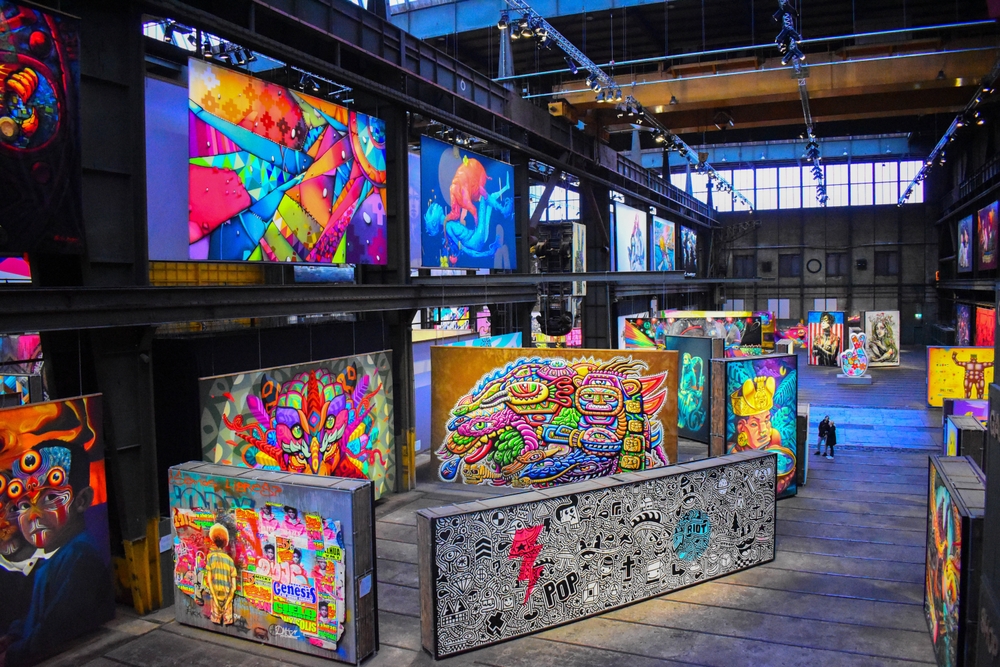Street Art Evolution: From Underground to Gallery Walls
Street art has undergone a remarkable transformation from rebellious underground expression to celebrated gallery installations. What began as unauthorized graffiti on city walls has evolved into a respected art form that bridges communities, challenges traditional boundaries, and creates new opportunities for artistic collaboration. This evolution reflects broader changes in how society views public space, creative expression, and the role of art in contemporary culture.

Theater of the Streets: Performance and Public Space
Street art has always functioned as an immersive theater, transforming ordinary urban landscapes into stages for creative expression. Artists use walls, buildings, and public spaces as canvases for performance-based works that engage passersby in unexpected ways. This theatrical element distinguishes street art from traditional gallery pieces, as viewers encounter the work organically during their daily routines. The interactive nature of street art creates spontaneous moments of cultural engagement, where communities become both audience and participant in ongoing artistic narratives.
Interactive Installations in Urban Environments
Contemporary street artists increasingly create interactive installations that invite community participation and digital engagement. These works often incorporate multimedia elements, QR codes, and augmented reality features that extend the artistic experience beyond the physical wall. Such installations demonstrate how experimental approaches to public art can foster deeper connections between artists and their audiences. The collaborative nature of these projects reflects a shift toward more inclusive artistic practices that prioritize community input and cultural dialogue.
Digital Innovation and Multimedia Expression
The integration of digital technology has revolutionized street art, enabling artists to create dynamic, multimedia experiences that evolve over time. Projection mapping, LED installations, and smartphone-activated content transform static murals into living, breathing artworks. This technological innovation has attracted galleries and museums seeking to showcase contemporary artistic expression that reflects our digital age. The storytelling potential of these hybrid works appeals to institutions looking to engage younger, tech-savvy audiences while maintaining artistic integrity.
Cultural Impact and Community Collaboration
Street art’s transition from underground movement to gallery recognition reflects its profound cultural impact and ability to foster community collaboration. Many successful street artists now work directly with neighborhoods to create murals that celebrate local history, address social issues, and beautify neglected spaces. This collaborative approach has legitimized street art as a tool for positive community engagement, leading to increased institutional support and recognition from cultural organizations worldwide.
Creative Expression Meets Commercial Recognition
The commercial art world has embraced street art’s innovative approaches to creative expression, leading to increased market value and collector interest. Galleries now actively seek works that demonstrate the experimental spirit and cultural relevance characteristic of street art. This recognition has created new opportunities for artists while raising questions about authenticity and the commodification of originally anti-establishment art forms. The tension between commercial success and artistic integrity continues to shape the evolution of street art as it moves between public spaces and private collections.
| Art Form | Venue Type | Typical Investment Range |
|---|---|---|
| Street Murals | Public Walls | $500 - $15,000 |
| Gallery Street Art | Commercial Galleries | $2,000 - $100,000+ |
| Installation Art | Museums | $10,000 - $500,000+ |
| Digital Street Art | Mixed Venues | $1,000 - $50,000 |
Prices, rates, or cost estimates mentioned in this article are based on the latest available information but may change over time. Independent research is advised before making financial decisions.
Engagement and Innovation in Contemporary Art Spaces
Modern galleries and museums have adapted their spaces and programming to accommodate street art’s emphasis on engagement and innovation. These institutions now feature immersive exhibitions that recreate urban environments, allowing visitors to experience street art in contexts that honor its original spirit while providing controlled viewing conditions. This adaptation demonstrates how traditional art spaces continue to evolve in response to contemporary artistic movements that prioritize accessibility and community connection over exclusive, elite presentation models.
The evolution of street art from underground expression to gallery recognition represents a broader democratization of artistic culture. As these works continue to bridge public and private spaces, they challenge traditional notions of where and how art should be experienced, creating new possibilities for creative expression and cultural engagement in the contemporary art world.






